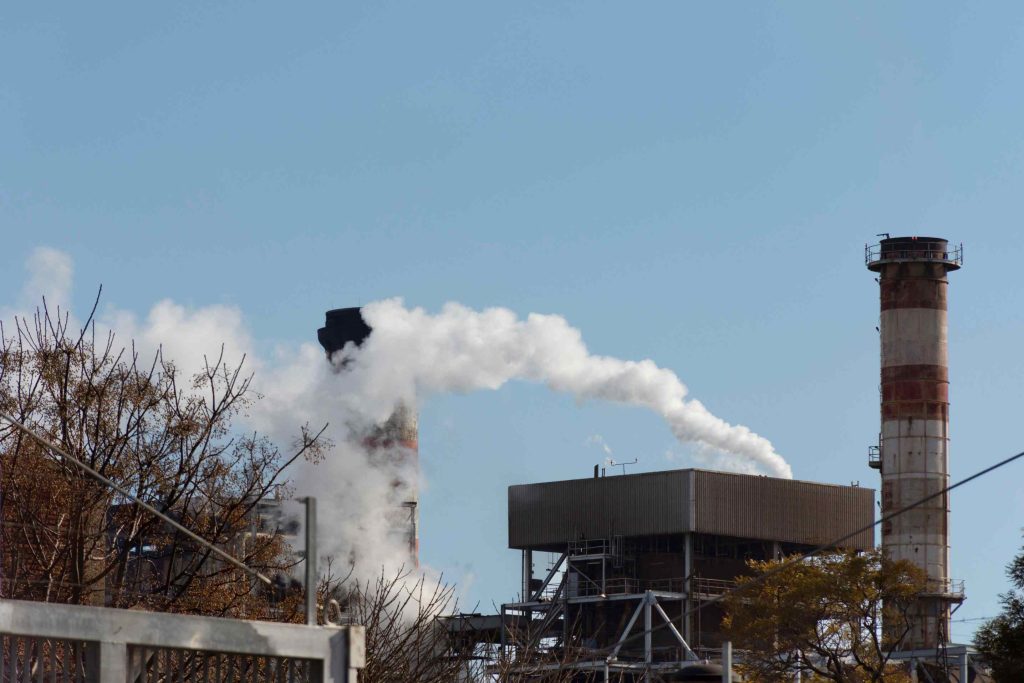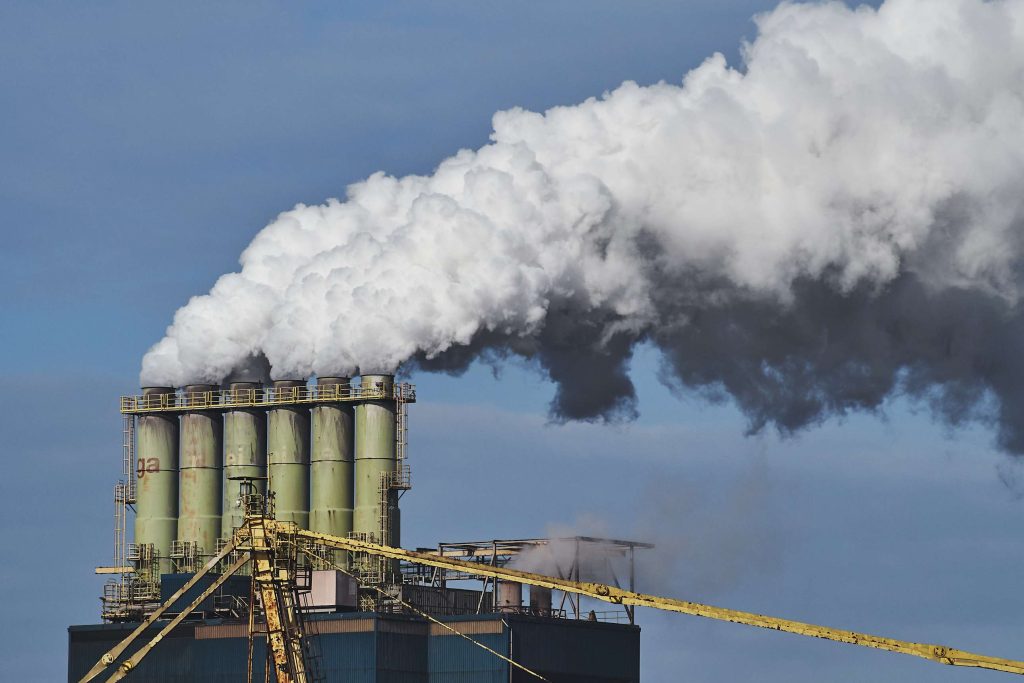Being eco-friendly is not an option nowadays. Instead, it has become a fundamental requirement in industry. A gas purification recycling plant is important because it allows manufacturers to make production more efficient and limit harmful emissions. They are developed to clean contaminated exhaust gases, extract pollutants, and make use of any advantages that can be found.
Across the planet, different industries are implementing the technology of exhausted gas purification recycling plant to fulfill strict environmental standards and aim for sustainability. We look into what makes these plants operate, their fundamental parts, and why they play such an important role in our times.

What Is an Exhausted Gas Purification Recycling Plant?
It is a complex industrial machinery used to clear and return harmful gases that are made in factories. They collect harmful chemicals, tiny particles, and gases from the emissions and release treated air or put purified gases back into use at the facility.
So, now you will be wondering which type of methods are used in purification of gases. Don’t worry, we have got you. Popular gas purification methods include filtration, absorption with chemicals, catalytic conversion, and heat treatment. In many manufacturing sectors, these plants treat exhaust gases to minimize the risk to the environment and human well-being.
The fact that these systems are being used suggests a powerful focus on being eco-friendly and running efficiently.
How Does an Exhausted Gas Purification Recycling Plant Work?
Harmful gases produced in factories are recycled by a plant that works through collecting, filtering, treating, and reusing them. It is designed to safely manage or reuse toxic gases, which supports a safer environment and productive operations.
Below is a description of how an exhausted gas purification recycling plant operates.
1. Gas Collection:
An enclosed duct diverts used gases from production equipment directly to a filtration system, so they cannot leak into the plant or outside.
2. Pre-Filtration:
These filters remove big waste particles and dust from the gas at this first stage.
3. Primary Purification:
The primary purification step of an exhausted gas purification recycling plant depends on the gas being used in the plant.
- Chemical scrubbers use liquids to take in noxious gases such as sulfur dioxide and ammonia.
- Activated carbon filters help to remove volatile organic compounds (VOCs).
- A catalytic converter helps change harmful NOx gases into safer ones.
- Thermal Oxidizers – convert flammable or poisonous gases into harmless products with high temperatures.
4. The use of gas cooling or heat recovery is optional:
In these cases, either the purified gases are cooled or used for heating other areas to save energy for later use.
5. Recovering and Responsible Recycling:
Following the purifying process, the gases may either be released to the environment or used in other industries. If they are still usable, they are recycled to help the process.
6. Watching & Regulating Machines:
All vital measurements along with gas composition and efficiency are checked by the control panels and sensors to ensure proper performance and following rules.
Exhausted gas purification recycling plants are designed to run automatically and with few hands needed, so it is perfect for industries that produce a lot of emissions. Converting waste gases into something useful is important in meeting sustainability goals and is done by these plants.
Key Components of an Exhausted Gas Purification Recycling Plant:
A depleted gas removal facility relies on several critical components to safely compress and treat industrial air before sending it for recycling. Being familiar with these components plays a role in business decisions involving such a system.
Some of the most important parts of these plants are:
1. Gas Gathering System:
They use these to collect end products, such as gases, directly from the production point. We aim to stop gas from leaking and entering the purification system so that it does not cause any risk during processing.
2. Pre-filters and particulate separators:
As indicated by the name, such units are used for filtering out dust particles, ash, and other solid elements before the gases are treated chemically or catalytically. Their content usually involves:
- Cyclone separators
- Bag filters
- Electrostatic precipitators
3. Chemical Scrubbers:
For expelling gas or vapors, such as ammonia, SO₂, or HCl, that are either acidic or alkaline. The scrubbers spray a neutral liquid into the gases to catch pollutants and then change them into safe compounds.
4. Carbon Filter:
They help trap VOCs and other smells that are typically hard to detect. The surface of activated carbon is full of holes that can trap airborne contaminants and vice versa.
5. Catalytic Converters are commonly referred to as Reactors:
These components increase chemical reactions that break down harmful gases including nitrogen oxides and carbon monoxide into safe gases nitrogen and carbon dioxide.
6. Thermal Oxidizers:
Thermal oxidizers are commonly used to treat toxic or flammable organic gases found in industry, changing them into water vapor and CO₂ by heating. Models that help with energy conservation are considered regenerative or recuperative.
7. Heat Recovery Units:
The equipment uses the extra heat from the treated gas to lower energy costs and decrease carbon emissions.
8. Draw the Summoning or Open the Air Vent.:
After the gases are cleaned, they are either sent into the air or used again in the process.
9. Systems for Automation and Control.:
Current systems use digital devices, PLCs, and sensors to monitor gas, performance, and maintenance in real time.
All parts of the system need to be properly tuned and maintained so it operates correctly and in line with environmental laws.

What Industries Use Exhausted Gas Purification Recycling Plants?
There is a high demand for these plants in many areas due to industrial processes that produce dangerous gases. They support companies in meeting environmental standards, keeping employees safe, and carrying out environmentally friendly business. Exhausted gas purification recycling plants are used in various industries that generate a lot of pollution because they work efficiently and flexibly.
Industries that commonly use Exhausted Gas Purification Recycling Plant include:
- Chemical manufacturing
- Pharmaceutical production
- Petrochemical and refining
- Electronics and semiconductor manufacturing
- Metal smelting and foundries
- Textile dyeing and printing
- Automotive manufacturing
- Paints and coatings production
- Plastics and rubber processing
- Waste incineration and recycling facilities
- Food and beverage processing (specific operations)
Environmental Benefits of an Exhausted Gas Purification Recycling Plant:
Having an exhausted gas purification recycling plant is crucial for protecting the environment in industrial operations. They play an important part in cutting pollution, cleaning the air, and achieving climate targets globally.
There is a quick reduction in the amount of air pollution caused by SOx, NOx, VOCs, and PM2.5. The World Health Organization shows that over 4.2 million deaths each year are caused by fine particulate matter, mainly due to respiratory and cardiovascular conditions. The removal of pollutants from exhaust gases is accomplished through the use of emission control devices.
Many exhausted gas purification recycling plant systems include gas recycling options, so the treated gas can be used in the manufacturing process. As a result, we use fewer resources, which cuts down on pollution and saves both energy and the environment. Some plants can cut VOC emissions as much as 98%, almost smoking their involvement in causing ground-level ozone, which leads to smog.
Air pollution is just one aspect of the damage done. Some plants have equipment that uses heat from exhaust gases to power more systems inside the facility. As a result, the system is more efficient with energy and lowers its carbon footprint. It is estimated that energy recovery systems can slash industrial energy use by as much as 20%, so they play a crucial role in decreasing carbon emissions.
Future Trends in Exhausted Gas Purification Recycling Technology:
Recycling of exhausted gas is advancing due to changes in industries, becoming more modern and efficient. Firms are increasingly using AI software to analyze data in real time to find ways to minimize downtime and improve purification efficiency. They support industries in meeting tough environmental rules without adding much extra cost.
The use of sophisticated nanomaterials and coating technologies for filtration has become popular, allowing for the catching of ultra-fine particles and complex chemicals, all with little energy usage. In addition, many small and medium businesses are favoring modular and adaptable exhausted gas purification recycling plants that require less startup investment. There is also a lot of interest in integrating purification systems with technologies that either store or convert CO₂ into valuable substances for a circular economy.
With governments committed to reducing emissions and promoting sustainable manufacturing, these new advancements are expected to turn old gas recycling stations into smarter, more environmentally friendly facilities.
Conclusion:
To keep factories in the green, an exhausted gas purification recycling plant is essential for achieving high standards and sustainable operations. Their ability to tackle exhaust gas emissions and engineered treatment not only protects nature but also yields cost savings thanks to energy savings and resource recovery.
Since technology keeps developing, staying ahead with the latest purification systems will be important for keeping your business competitive and making sure sustainability goals are met.
Selecting a trusted supplier is important for industries committed to a sustainable and compliant future. Get in touch with Shangqiu Jinzhongqing Heavy Industry to receive a customized quote and find out about our solutions that are tailored to your exhaust gas purification needs.




